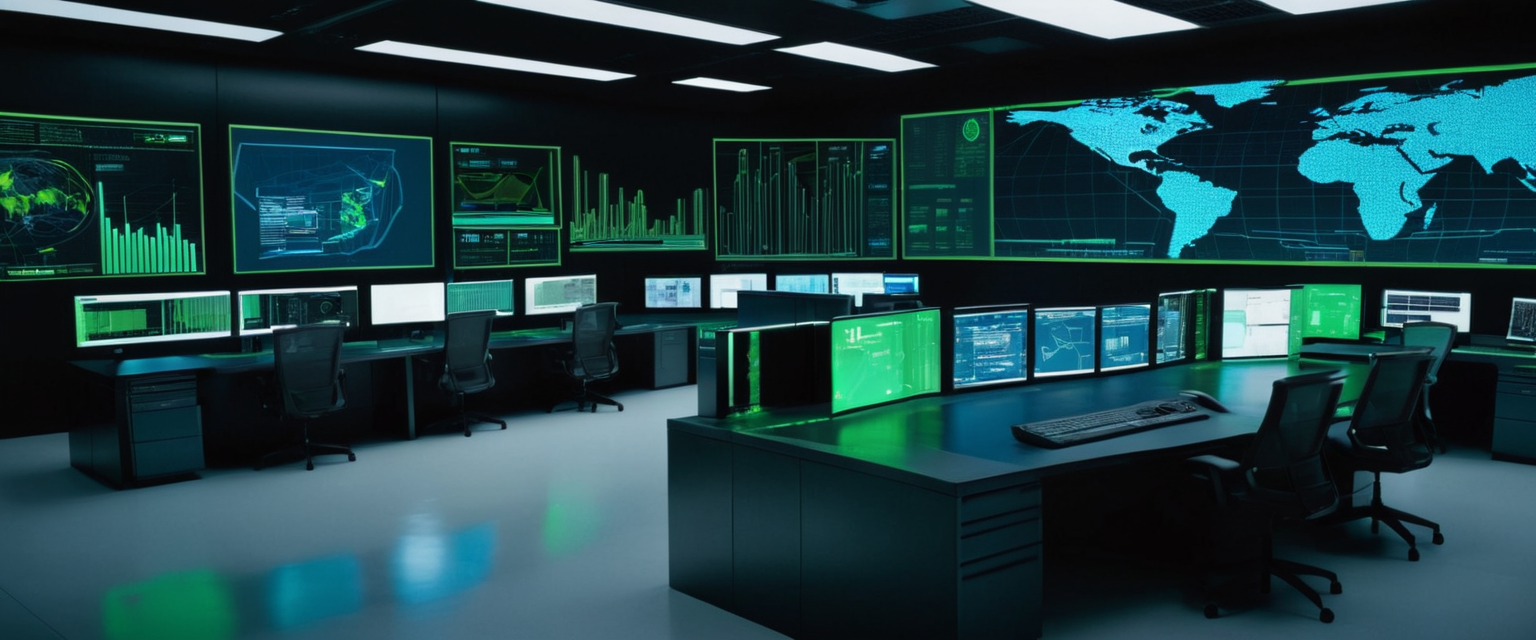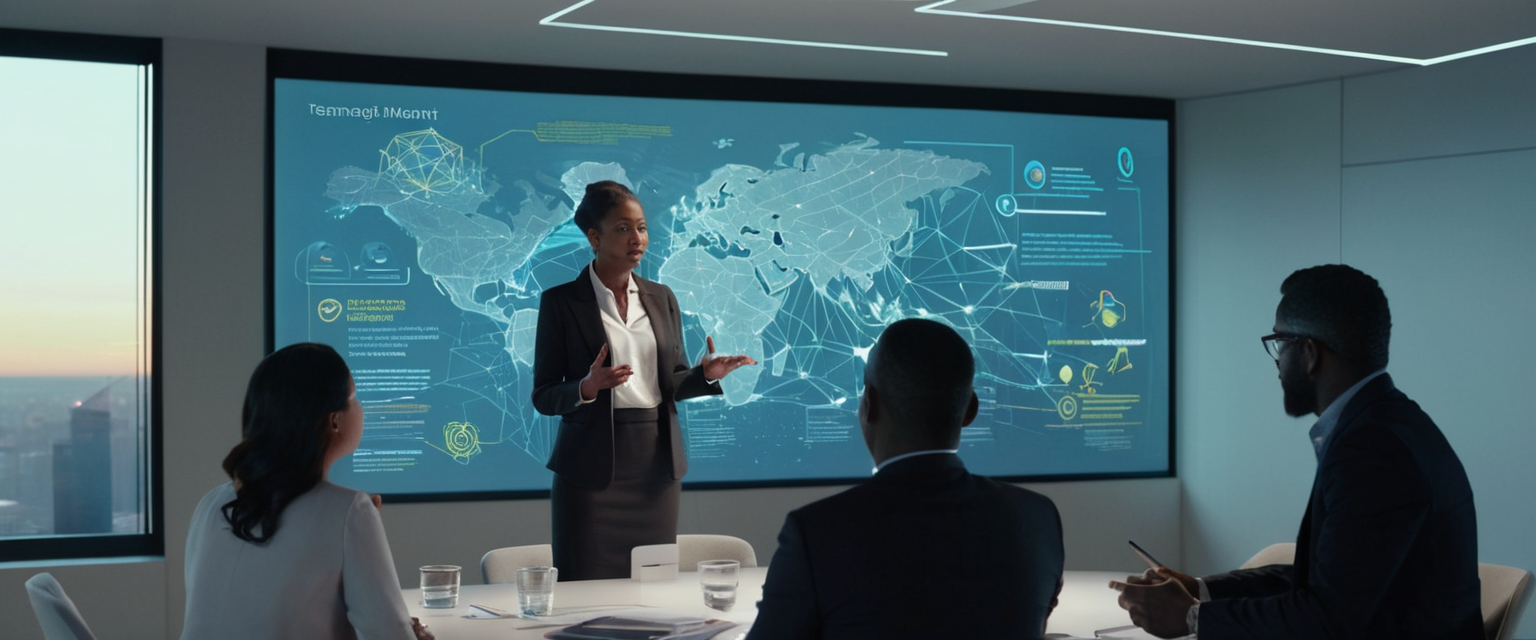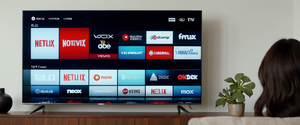
This comprehensive report examines the critical landscape of camera and microphone security for corporate travelers, addressing the sophisticated surveillance threats that executives and business professionals face in today’s digital age. The research synthesizes current best practices, technological solutions, and strategic countermeasures to create an actionable framework for protecting organizational assets and personal privacy while traveling. Organizations must now contend with an evolving threat environment where hidden recording devices have become smaller, cheaper, and more prevalent—particularly in hospitality settings where business travelers spend significant portions of their time. By implementing a systematic checklist approach combining physical inspection, technological detection, digital security measures, and organizational policies, corporations can substantially mitigate the risks of unauthorized surveillance, data exfiltration, and compromised communications during business travel.
The Escalating Threat of Unauthorized Surveillance in Corporate Travel Environments
The surveillance landscape confronting corporate travelers has undergone a dramatic transformation in recent years, shifting from theoretical concerns to documented, widespread problems affecting thousands of business professionals annually. Hidden cameras in hotel rooms, Airbnbs, and other temporary accommodations have transitioned from isolated incidents to systematic vulnerabilities that security professionals increasingly recognize as critical threats to corporate operations and executive safety. The proliferation of inexpensive surveillance technology, coupled with the widespread normalization of recording devices in consumer products, has created an environment where unauthorized recording can occur with minimal technical expertise or financial investment from threat actors. Corporate executives face particularly acute risks because their travel patterns, business communications, and strategic decision-making represent valuable intelligence to competitors, foreign governments, and criminal organizations seeking corporate espionage opportunities.
The sophistication of modern surveillance devices compounds these threats significantly. Contemporary hidden cameras and microphones are frequently disguised as ordinary household items such as alarm clocks, smoke detectors, USB charging adapters, picture frames, and even clothing hooks. These devices often incorporate advanced features including high-resolution video recording, night vision infrared capabilities, wireless connectivity enabling real-time streaming, and cloud storage synchronization that allows remote monitoring from anywhere globally. The miniaturization of surveillance technology means that detection becomes exponentially more challenging, requiring a combination of technical knowledge, specialized equipment, and systematic inspection protocols to identify threats reliably. Moreover, the economic accessibility of surveillance equipment—devices can now be purchased online for as little as twenty dollars—removes traditional barriers preventing ordinary individuals from deploying sophisticated monitoring systems, whether motivated by theft, blackmail, corporate espionage, or simple voyeurism.
The consequences of inadequate surveillance detection during corporate travel extend far beyond individual privacy violations. Business travelers, particularly those at executive levels, frequently carry sensitive information including proprietary business data, confidential communications, strategic plans, customer information, and financial data. When corporate travelers are subjected to unauthorized recording in private spaces like hotel rooms, the consequences can include intellectual property theft, competitive intelligence gathering, executive targeting for extortion schemes, breaches of client confidentiality, and potentially serious personal safety threats. Additionally, the recording of sensitive business conversations in supposedly private settings can render communications inadmissible in legal proceedings, compromise negotiation strategies, and undermine the confidentiality protections that attorneys, consultants, and executives expect when discussing sensitive matters in accommodation spaces.
The liability exposure for corporations that fail to implement adequate surveillance detection and prevention measures has increased substantially. Companies face potential legal obligations to protect executive and employee privacy, regulatory compliance requirements under data protection frameworks, insurance coverage implications if breaches occur through inadequate security practices, and reputational damage if sensitive business information becomes public following successful surveillance operations. The December 2024 targeted attack against a UnitedHealth executive exemplified how physical and digital threats have converged in ways that demand comprehensive protection strategies, with the company subsequently disclosing $1.7 million in security spending for 2024 and private security firms reporting tenfold increases in demand for executive protection services.
Understanding Hidden Camera Technologies and Common Concealment Locations
Effective camera security requires understanding the technological capabilities of modern surveillance devices and the strategic locations where threat actors typically conceal recording equipment. Contemporary hidden cameras employ several distinct technological approaches, each presenting unique detection challenges that security professionals must address comprehensively. Traditional hardwired cameras connected to dedicated recording systems represent one category of threat, though these require physical installation infrastructure that makes them somewhat more detectable through systematic inspection. More problematic for corporate travelers are wireless cameras that transmit video feeds via Wi-Fi or cellular networks, enabling remote monitoring in real-time and creating opportunities for threat actors to monitor business activities continuously from distant locations. These wireless systems often integrate cloud storage capabilities, meaning recorded footage can be automatically uploaded to remote servers where it persists even if physical devices are discovered and removed.
The sophistication of surveillance devices incorporates multiple technological enhancements specifically designed to evade detection. Many hidden cameras employ infrared illumination for night vision recording, emitting wavelengths invisible to the human eye that allow filming in complete darkness—a particular concern for hotel room surveillance where bedrooms and bathrooms are typically dark spaces. Some devices integrate both visible-spectrum and infrared recording, allowing seamless transitions between light and dark environments without any visible indicator to observers that recording is occurring. Battery-powered devices create even more significant challenges because they can operate independently from electrical infrastructure, potentially remaining active for extended periods without drawing attention to suspicious power sources or visible wiring.
Common hiding locations for surveillance devices in hotel rooms and temporary accommodations follow predictable patterns based on strategic vantage points and concealment effectiveness. Smoke detectors mounted on ceilings represent one of the most frequently exploited hiding locations because they provide elevated positioning with panoramic views of entire rooms, their design already incorporates holes and sensors that can conceal small camera lenses without appearing suspicious, and they are ubiquitous fixtures that rarely draw guest scrutiny. Bedside alarm clocks present similarly exploitable opportunities, positioned conveniently to face beds and providing natural concealment within decorative designs and speaker grilles. Electrical outlets, particularly those that appear recently installed or slightly misaligned, offer both concealment and continuous power connections that eliminate battery limitations on surveillance duration. USB charging adapters present particularly insidious threats because business travelers routinely plug personal devices into room-provided chargers, creating opportunities for threat actors to record while devices are charging—capturing travelers in vulnerable states near beds, desks, and bathroom areas.
Additional common concealment locations exploited for hidden cameras include wall-mounted picture frames and artwork (offering both space behind glass and naturally angled positioning toward beds or bathroom entrances), table and desk lamps whose shades and housings can easily conceal lenses, mirrors that may be converted into two-way mirrors enabling observation from adjacent spaces, wall hooks positioned near bathing areas, and decorative items like stuffed animals or throw pillows left on beds. The sophistication of modern concealment extends to disguised devices specifically manufactured to appear as ordinary objects—pen-shaped cameras with hidden lenses, watches with integrated recording capabilities, and specialized devices designed to blend seamlessly into hotel room décor. Understanding these common locations and technological approaches enables corporate travelers and their security teams to implement systematic inspection protocols that address the most likely surveillance threats rather than pursuing exhaustive and impractical searches of every conceivable location.
Detection Methods: Physical Inspection Protocols for Corporate Travelers
Developing effective detection capabilities requires combining multiple methodologies because no single approach provides comprehensive coverage against all surveillance device types and technological variations. Physical inspection represents the foundational detection method that security professionals recommend, emphasizing systematic visual examination of high-probability locations where concealment opportunities are maximized and observer exposure is minimized. This methodology begins with identification of critical zones—areas where an individual is most vulnerable to unauthorized recording—which in hotel environments typically include bathrooms, areas near beds, and private spaces where business communications or personal activities occur. The systematic approach involves examining objects that appear out of place, recently installed, or structurally inconsistent with normal hotel room furnishings, recognizing that threat actors may deliberately position suspicious items in locations with advantageous viewing angles.
Professional security practitioners recommend the “80-20 method” for hotel room inspection, focusing eighty percent of search effort on the twenty percent of locations most likely to conceal surveillance devices. This approach acknowledges that comprehensive searches of every potential location become impractical for traveling professionals with limited time, and prioritization based on threat probability and strategic advantage provides more efficient protection. Systematic physical inspection should include examining smoke detectors for suspicious modifications, checking alarm clocks for evidence of tampering, inspecting electrical outlets for irregularities, examining picture frames and wall decorations for concealment potential, and checking light fixtures for modifications or cavity spaces. For each location, inspectors should look for evidence of recent installation, misalignment from symmetrical positioning, physical inconsistencies in device design, or any modifications suggesting human tampering. Inspectors should check adjoining room walls for evidence of holes or modifications that might indicate cameras positioned to record through walls, examine ceiling areas above beds for suspicious objects or modifications, and inspect bathroom fixtures including ventilation grilles that could conceal recording devices.
The “fingernail test” represents one widely recommended physical verification method for detecting two-way mirrors, though security professionals acknowledge this technique has limitations requiring supplementary verification approaches. The traditional fingernail test involves placing a fingernail against a mirror surface and observing whether a gap appears between the nail and its reflection—a gap indicating a standard mirror, while no gap potentially indicating a two-way mirror. However, modern manufacturing techniques and certain mirror materials can produce false results, making this test unreliable as a standalone verification method. More sophisticated approaches involve shining flashlight beams at mirrors from various angles, listening to acoustic responses by knocking mirrors to detect hollow spaces behind them, and observing lighting intensity differences that two-way mirrors typically exhibit due to their construction requiring lighter reflective surfaces to allow observation from the dark side. The flashlight method involves holding a smartphone flashlight against a mirror surface and observing whether light passes through to the opposite side—if visible, indicating potential two-way mirror construction with a hollow space for observation.
Contemporary corporate travelers increasingly employ technological detection aids to supplement physical inspection, recognizing that certain surveillance device types remain invisible to unaided human observation. Hidden camera detector devices utilizing radio frequency (RF) scanning technology represent one commonly recommended tool, as they detect radio signals emitted by wireless surveillance cameras and alert users through audible or visual indicators when signals are identified. RF detectors operate across frequency ranges typically utilized by Wi-Fi cameras, Bluetooth devices, and cellular transmission systems, though sophisticated devices with multiple sensitivities provide better detection across broader frequency spectra. The limitation of RF detection involves false positives from legitimate devices like televisions, Wi-Fi routers, and cellular signals, requiring operators to understand how to distinguish camera signals from background electromagnetic noise. Additionally, hardwired cameras not transmitting radio signals remain undetectable through RF scanning alone, necessitating supplementary detection methodologies.
Infrared detection technology addresses this gap by specifically targeting the infrared illumination systems employed by night-vision cameras. Many hidden cameras incorporate infrared LEDs that are invisible to human eyes but detectable through smartphone cameras lacking infrared filters or through specialized infrared scanning devices. When using smartphone cameras to detect infrared signals, travelers should enter darkness, activate the camera’s video mode, and systematically sweep the camera across the room while observing the display screen for white or purple glowing dots that indicate infrared light sources. This method remains particularly effective for detecting night-vision camera systems because the infrared LEDs cannot be disabled without eliminating the camera’s ability to record in low-light conditions. Professional-grade infrared scanners provide more sophisticated detection capabilities, though the smartphone-based method provides an accessible baseline detection approach for corporate travelers without specialized equipment.
Wi-Fi network scanning represents another critical detection technology that corporate travelers should deploy upon arriving at accommodations. Many hidden cameras and surveillance devices connect to Wi-Fi networks to enable remote monitoring and cloud storage capabilities, making them discoverable through network scanning applications that list all devices connected to a specific Wi-Fi network. Corporate travelers can download free network scanning applications such as Fing, which displays all devices connected to a network alongside manufacturer information and device identifiers. Suspicious devices with names like “IPcamera,” “InteriorCam,” or other obviously camera-related identifiers may indicate hidden surveillance equipment, though threat actors increasingly disguise device names to avoid detection. Examining network devices for known surveillance camera manufacturers provides another identification approach, though this requires security awareness training to recognize common hidden camera brand names. The limitation of Wi-Fi scanning involves cameras not connected to wireless networks—devices recording locally to microSD cards without transmitting via Wi-Fi remain undetectable through this methodology, requiring supplementary detection approaches.

Microphone and Audio Privacy Defense Mechanisms
While visible surveillance through hidden cameras presents obvious privacy risks for corporate travelers, unauthorized audio recording through concealed microphones represents an equally significant but less frequently addressed threat vector. Hidden microphones and audio recording devices exploit the sophistication of modern voice recording technology, enabling high-quality audio capture from discrete devices that occupy minimal physical space and consume minimal power. Wireless microphones, particularly those utilizing RF transmission, present particularly acute threats in business settings because they allow remote eavesdropping on sensitive conversations from considerable distances—FM wireless microphones can transmit interceptable signals up to one mile away, creating opportunities for external threat actors to monitor business discussions without entering accommodation spaces. Digital microphones connected to Wi-Fi networks enable even more sophisticated remote monitoring, with conversations transmitted to cloud storage systems where they persist indefinitely and remain accessible to threat actors from anywhere globally.
Corporate travelers engaged in sensitive business discussions face particular risks from audio surveillance because conversations often involve proprietary information, strategic negotiations, client confidentiality, legal advice, financial discussions, and other topics whose disclosure would cause significant organizational harm. Unlike video surveillance, which requires line-of-sight positioning and careful concealment, audio surveillance through microphones can operate through walls, doors, and other barriers that block visual line-of-sight, dramatically expanding concealment possibilities and detection difficulty. Standard inspection methods designed for detecting hidden cameras prove largely ineffective for identifying hidden microphones because audio devices can be extraordinarily small—matchbox-sized devices or smaller can record high-quality audio indefinitely—and require no optical line-of-sight positioning that creates visibility clues.
Professional technical surveillance countermeasures (TSCM) practitioners increasingly recommend active audio defense technologies that disrupt recording through sonic interference rather than attempting passive detection of concealed devices. Ultrasonic microphone jamming devices emit frequencies above the human hearing range that interfere with microphone recording capabilities, rendering captured audio unintelligible to listeners while remaining inaudible to people in the space. These devices operate by generating ultrasonic noise that masks voice frequencies or distorts audio capture mechanisms, making recordings unusable even if devices successfully capture the audio signals. Some advanced systems combine ultrasonic emission with white noise acoustic interference, creating multiple layers of disruption that affect different microphone types and technologies. The technological advantage of active defense involves protection against unknown or undetected microphones—rather than identifying and locating specific devices, sonic jamming creates an environment where recording becomes technically impossible regardless of device concealment or sophistication.
Professional TSCM jamming systems designed for conference rooms and executive spaces utilize sophisticated ultrasonic mixing technology with adjustable parameters addressing different room sizes and threat profiles. Desktop-mounted systems covering personal spaces, wall-mounted systems for larger conference areas, and portable systems for traveling professionals represent different implementation approaches addressing specific requirements. Coverage patterns typically extend 2-6 meters from the jamming device depending on configuration, with professional systems offering 360-degree horizontal coverage and 60-degree vertical coverage, allowing protection of entire conference rooms or personal spaces. Some advanced systems integrate central management capabilities enabling monitoring and control of multiple jamming units across multiple locations, creating comprehensive audio defense throughout organizational facilities.
Personal microphone protection devices designed for traveling executives offer portable defense capabilities in spaces where permanent infrastructure cannot be installed. Portable ultrasonic protection systems weighing under one pound, measuring approximately 7.68 inches by 3.19 inches, and offering battery life of 3-5 hours provide practical protection for executives during sensitive hotel room discussions, private meetings, or other contexts where audio privacy is critical. These devices employ voice control activation, manual power switches, and adjustable intensity settings accommodating different room sizes and threat profiles. The technology represents a philosophical shift from detection-focused approaches to protection-focused strategies, recognizing that executives traveling internationally or to high-risk locations may reasonably prioritize ensuring conversations remain protected rather than spending travel time attempting to detect and locate hidden devices.
The legal and practical considerations surrounding active audio jamming deserve careful organizational attention. While ultrasonic frequencies exceed human hearing ranges and thus avoid regulatory concerns associated with audible noise jamming, organizations should verify that ultrasonic jamming technologies comply with applicable regulatory frameworks in their operating jurisdictions before deployment. In legitimate business contexts such as law offices, financial institutions, government agencies, and Fortune 500 companies protecting competitive interests or client confidentiality, TSCM jamming systems have achieved widespread adoption and represent recognized best practices. However, organizational policies should clearly document which spaces employ active audio jamming and ensure legitimate business purposes justify implementation, as misuse could create legal liability in contexts where recording expectations differ.
Hotel and Accommodation Assessment Framework for Corporate Security
Selecting accommodations represents a critical upstream intervention point enabling organizations to reduce surveillance risks through deliberate venue selection rather than relying entirely on detection approaches after arrival. A comprehensive accommodation assessment framework examines physical security features, technical infrastructure, management practices, and organizational policies addressing surveillance prevention and guest privacy protection. Hotels selected for executive travel should demonstrate commitment to guest privacy through physical design choices including interior corridors reducing external accessibility, secure entry systems preventing unauthorized building access, and security camera systems limited to public areas rather than extending into private guest spaces. Room selection within chosen hotels represents an additional control mechanism—upper-floor rooms between the third and sixth floors balance vulnerability to crime (ground-floor rooms proving significantly more accessible to intruders) with accessibility by emergency services, and rooms positioned away from elevators and fire exits reduce traffic patterns that might enable casual intrusion attempts.
Accommodation selection criteria should explicitly address in-room security features including solid-core wood or metal doors rather than hollow construction providing minimal intruder resistance, functional deadbolt locks with at least one-inch throw bolts, wide-angle peepholes enabling occupants to view doorway visitors before admitting entry, and door guards or secondary locking mechanisms providing additional security beyond primary locks. Rooms should be equipped with in-room safes for storing valuables, though travelers should recognize that standard hotel safes may not provide protection against determined adversaries or hotel staff with master access. Electronic card-access locks offer advantages over traditional key locks by enabling hotels to disable former keycards issued to previous guests and unauthorized employees, though these systems also merit verification that security protocols remain appropriately implemented rather than compromised through management negligence.
Technical infrastructure assessment should examine whether accommodations offer password-protected or encrypted Wi-Fi networks separate from staff networks, implement data encryption for online payments and bookings, and employ security protocols preventing unauthorized device connections to hotel network infrastructure. Accommodations meeting specific cybersecurity certifications such as GDPR compliance (applicable in European jurisdictions) or PCI DSS compliance (payment card industry standards) demonstrate organizational commitment to information security that often correlates with broader privacy protections. Hotels employing dedicated IT security personnel, conducting regular security audits, and implementing vulnerability scanning represent preferred choices over smaller properties lacking formalized security infrastructure.
Practical verification approaches should include reviewing online guest reviews for suspicious commentary suggesting surveillance or privacy breaches, researching local crime statistics and safety records through public law enforcement databases, and conducting satellite imagery review through tools like Google Street View to verify neighborhood characteristics and premises security features. Before confirming bookings, corporate travelers should directly contact hotel management requesting specific information about security features, camera policies, and privacy protections, using responses to evaluate organizational security maturity and management transparency. Hotels providing vague responses, avoiding direct answers, or demonstrating defensive reactions to reasonable privacy inquiries present concerns warranting venue reconsideration.
Upon check-in, travelers should employ deliberate tactics minimizing information disclosure and preventing observation of room assignments. Requesting that front desk staff write down room numbers rather than announcing them audibly prevents potential eavesdroppers from identifying room locations for subsequent intrusions or targeted surveillance. Avoiding display of expensive jewelry, watches, or luxury goods during check-in prevents criminals from “window shopping” guests and identifying robbery targets based on apparent wealth indicators. Upon entering rooms, travelers should immediately inspect security features by testing locks, confirming functionality of secondary locking mechanisms, and verifying that adjoining room doors lock securely. Systematic room inspection should occur immediately upon entry, examining all areas to ensure no individuals remain hidden and no obvious surveillance devices are visibly present before unpacking or becoming settled in the space.
Developing Comprehensive Corporate Travel Security Policies
Organizational policies represent the foundational framework enabling consistent implementation of surveillance defense practices across all traveling personnel, from executive-level employees to junior staff members conducting routine business travel. Comprehensive corporate travel security policies should explicitly address camera and microphone security as discrete risk categories requiring specific countermeasures, education, and reporting protocols. Policy development should begin with risk assessment and threat analysis specific to the organization’s travel patterns, destinations, employee roles, and information sensitivity levels. Organizations whose employees travel exclusively within developed Western nations with low surveillance risks may reasonably adopt different approaches compared to organizations with employees regularly traveling to international locations with elevated risks, or organizations whose executive leadership constitutes attractive targets for competitive intelligence operations or foreign government surveillance.
Policies should establish clear responsibilities designating specific organizational personnel responsible for travel security coordination, pre-trip briefing delivery, emergency response, and post-incident investigation and remediation. Rather than placing burden on individual travelers to independently assess security risks and implement appropriate countermeasures, mature organizations develop centralized capabilities providing travelers with vetted accommodations lists, pre-approved transportation providers, security briefing materials, and access to professional security consultants for high-risk trips. Policy documentation should specify what surveillance detection equipment traveling personnel may carry, how employees should respond if suspicious devices are discovered, what communication channels should be employed for incident reporting, and how organizations will support employees if device seizure or privacy breaches occur.
Training and awareness education should address practical detection methodologies, the nature and prevalence of contemporary surveillance threats, consequences of inadequate privacy protection, and organizational expectations for professional conduct in accommodations. Rather than creating paranoia or excessive surveillance focus that interferes with business effectiveness, training should emphasize pragmatic risk management integrating reasonable precautions into normal travel routines. Employees should understand common concealment locations through scenario-based training, receive hands-on practice with detection technologies like infrared viewers and RF detectors, and learn to recognize suspicious circumstances warranting escalation to professional security personnel. Training should explicitly address that many surveillance devices now routinely feature wireless capabilities and remote monitoring, meaning simply removing visible devices may not eliminate ongoing security threats if replacement devices or backup recording systems remain operational.
Policy provisions should address sensitive communications requiring heightened precautions. Executive-level discussions regarding strategic negotiations, confidential client matters, proprietary business information, or sensitive financial information merit consideration of enhanced protection measures including use of professional security services for venue assessment, temporary relocation to secure spaces for critical discussions, employment of audio privacy devices, or deferral of sensitive communications until personnel return to office environments with controlled security infrastructure. Organizations should recognize that some discussion categories warrant extraordinary precautions including litigation strategy discussions with attorneys (implicating attorney-client privilege), merger and acquisition negotiations (implicating securities law and competitive harm), and discussions with government agencies or regarding international operations (implicating national security considerations).
Incident reporting and response protocols should establish clear procedures for employees who discover or suspect surveillance devices. Guidance should specify that discovered devices should not be tampered with or removed, as preservation of evidence supports criminal investigation and may provide information regarding threat actor identity, duration of surveillance, or scope of recorded material. Employees should be instructed to photograph or document suspicious items for investigative purposes, immediately depart the space, and report suspected surveillance to designated organizational security personnel using secure communication channels. Organizations should ensure employees understand that discovery of surveillance does not constitute employment-related fault or reflect negative performance evaluation—frameworks creating fear or blame for incident discovery discourage accurate reporting and prevent timely organizational response.
Post-travel procedures should include checking device activity and login records for any suspicious access, changing important passwords from secure office environments rather than while traveling, and reviewing cloud storage activity to identify whether unauthorized access occurred during travel periods. Employees should be educated that surveillance risk extends beyond the immediate travel period—compromised devices or credentials could enable attackers to monitor ongoing communications weeks or months after travel concludes, making proactive protective measures during trips essential for long-term security.
Organizations should consider implementing technical controls that reduce surveillance damage even if successful recording occurs. Approaches include limiting stored information on traveling devices to only necessary materials, using separate devices for sensitive travel with limited persistent data, utilizing cloud storage encryption ensuring information remains inaccessible even if devices are compromised, and employing virtual private networks (VPNs) that encrypt all internet communications preventing observation of online activities even if network access is compromised.

Advanced Technology Solutions for Professional Surveillance Detection
Organizations with sophisticated security requirements or personnel traveling to high-risk locations may reasonably invest in professional-grade surveillance detection technologies exceeding capabilities of consumer detection tools. Professional TSCM (Technical Surveillance Countermeasures) specialists utilize advanced equipment including non-linear junction detectors (NLJDs) that identify semiconductor components and electronic circuitry regardless of whether devices are powered on or transmitting signals, spectrum analyzers providing detailed analysis of radio frequency emissions across broad frequency ranges, thermal imaging cameras detecting heat signatures from electronic devices that might otherwise remain invisible, and specialized probes for detecting magnetic components typically employed in GPS tracking devices.
Non-linear junction detector technology represents particularly sophisticated detection capability, as these devices can identify electronic components even within sealed or powered-down devices by detecting the characteristic radio frequency reflections that result from semiconductor junctions interacting with the detector’s transmitted signal. NLJD technology theoretically enables detection of surveillance devices regardless of whether they are actively operating, connected to power, or concealed within apparently innocuous objects, though practical effectiveness varies based on detection range, background electromagnetic environment, and operator expertise. Professional TSCM practitioners receive specialized training enabling interpretation of NLJD signals, distinguishing between legitimate electronic components (phones, tablets, room electronics) and suspicious devices representing surveillance equipment.
Thermal imaging cameras detect heat signatures from electronic devices operating in real-time, identifying warm spots within walls, behind mirrors, or within concealed locations that might indicate surveillance device operation. This technology proves particularly effective for identifying devices in active operation, though powered-down devices or devices employing thermal masking techniques may evade thermal detection. Professional TSCM thermal imaging typically involves systematic sweeping of room areas while carefully documenting temperature anomalies requiring subsequent investigation.
Spectrum analyzers provide comprehensive analysis of the electromagnetic environment, detecting radio frequency signals across frequencies potentially used by surveillance devices including Wi-Fi, Bluetooth, cellular, and specialized frequency bands employed by sophisticated surveillance equipment. Professional spectrum analysis allows operators to identify suspicious signals inconsistent with expected room electronics and establish baseline electromagnetic signatures for comparison against suspicious anomalies. This technology provides particular value in international travel contexts where room equipment may vary significantly from familiar patterns, and spectrum analyzers help distinguish between expected technological variations and suspicious surveillance infrastructure.
Professional TSCM services represent significant organizational investment—comprehensive sweeps of conference rooms, office suites, or residential locations can cost thousands of dollars and require several hours of professional technician time. However, for organizations protecting extraordinarily sensitive information, conducting negotiations of strategic importance, or supporting executive personnel with elevated threat profiles, this investment may constitute essential security infrastructure. Fortune 100 corporations, government agencies, financial institutions, and legal organizations routinely employ regular TSCM sweeps as preventive security measures, particularly before hosting external parties, conducting sensitive negotiations, or following any suspicious circumstances suggesting potential surveillance intrusion.
Organizations should recognize that TSCM sweeps provide point-in-time assessment reflecting surveillance presence at the moment of sweep, but do not guarantee ongoing protection or prevent placement of surveillance devices after sweeps conclude. Professional TSCM firms increasingly offer continuous monitoring services providing real-time surveillance detection for critical meetings, with technical operations personnel monitoring RF spectrum for suspicious transmissions and alerting site occupants to detected threats immediately. This approach addresses the vulnerability of discrete sweeps by providing ongoing surveillance throughout critical events or discussions, though costs and operational complexity associated with continuous monitoring limit adoption to highest-priority organizational contexts.
Digital Security and Communication Protection During Travel
Physical surveillance detection through cameras and microphones represents only one dimension of corporate travel security; comprehensive protection requires equal attention to digital security ensuring that legitimate business communications remain protected from interception, unauthorized access, or remote monitoring. Traveling corporate personnel frequently employ mobile devices including smartphones, tablets, and laptops for business purposes, yet these devices present substantial digital security risks when operated in unfamiliar environments, connected to untrusted networks, or when subjected to sophisticated cyberattacks targeting traveling executives. The digital security foundation for business travel must address network security, device protection, communication encryption, and account security through coordinated approaches recognizing that surveillance threats increasingly blend physical and digital dimensions.
Virtual Private Network (VPN) technology provides the foundational digital security protection for business travelers, encrypting all internet traffic transmitted from traveling devices through encrypted tunnels that prevent interception or observation by network operators, malicious actors on shared networks, or sophisticated attackers positioned to intercept unprotected communications. VPNs prove particularly essential when using public Wi-Fi networks in airports, hotels, coffee shops, and other traveling contexts where multiple untrusted parties share network infrastructure and malicious actors frequently position themselves to capture unencrypted data. Commercial VPN providers with strong security reputations, global server networks ensuring reliable connectivity regardless of location, and documented privacy practices preventing user activity logging represent essential tools for traveling security-conscious professionals. Organizations should establish VPN requirements as mandatory security policies rather than optional recommendations, recognizing that unencrypted internet use during travel represents unacceptable organizational risk.
Secure messaging applications employing end-to-end encryption represent critical tools for business communication during travel, ensuring that sensitive discussions remain protected even if communications transmit through compromised networks or are intercepted by sophisticated adversaries. Applications like Signal, WhatsApp, and Telegram implementing Signal protocol end-to-end encryption provide assurance that only message senders and intended recipients can access message content—the applications themselves, network operators, and potential interceptors cannot decrypt or read protected messages. Organizations should establish preferences for encrypted communication tools while maintaining awareness that end-to-end encrypted communication creates investigative challenges for law enforcement and compliance complexities for regulated organizations where communication retention requirements may conflict with encryption practices.
Multi-factor authentication (MFA) represents another essential digital security control requiring employees to present multiple authentication factors (something known such as passwords, something possessed such as hardware tokens or mobile devices, something inherent such as biometric identifiers) before accessing organizational systems or sensitive accounts. MFA substantially impedes account takeover attacks even when threat actors successfully compromise primary passwords through phishing, credential theft, or other attack methods, as the secondary authentication factor remains under the legitimate user’s control. Organizations should mandate MFA for all business accounts including email, cloud storage, financial systems, and any other accounts containing sensitive information or enabling access to critical organizational infrastructure. During travel, MFA significantly increases account security resilience, though traveling employees should maintain physical control of MFA devices (phones receiving authentication codes, hardware tokens) to prevent compromise through theft or loss.
Device security fundamentals must receive heightened attention during travel given that devices represent concentrated repositories of sensitive information and are vulnerable to theft, surveillance, or compromise through physical device access. Organizations should mandate device encryption ensuring that information remains inaccessible if devices are lost or stolen, implementing approaches like full-disk encryption for computers and encrypted storage on mobile devices. Traveling employees should establish strong, unique passwords for device access rather than using simple PIN codes, and should enable remote device management features allowing organizations to locate, remotely lock, or remotely wipe devices if theft occurs during travel. Devices should be stored securely in hotel rooms—preferably in room safes when traveling to high-risk locations, and definitely not left unattended in public areas where theft or tampering might occur.
Organizations should explicitly address what information traveling employees should carry on devices, recognizing that traveling with extensive sensitive information increases damage if devices are compromised or stolen. Risk-proportionate approaches might involve traveling with laptops and phones containing only information necessary for specific trip purposes rather than entire organizational databases, utilizing separate travel devices without sensitive persistent data for high-risk locations, or accessing sensitive information through remote desktop connections rather than storing information locally on traveling devices. Particularly sensitive information like employee records, customer data, financial information, intellectual property, or strategic plans should generally not travel with employees unless mission-critical necessity demands information access during travel periods.
Network security practices must receive particular attention given that compromised networks represent primary threat vectors for traveling device compromise. Employees should disable automatic Wi-Fi and Bluetooth connectivity settings that connect devices to nearby networks without deliberate user action, preventing compromised or malicious networks from automatically capturing devices. When connecting to public networks, employees should verify that network identifiers correspond to legitimate business sources—hotel networks should match stated accommodation names, and employees should verify network authenticity with hotel staff before connecting, as sophisticated attackers frequently establish “evil twin” networks mimicking legitimate business venues. Organizations should establish policies prohibiting use of public Wi-Fi for sensitive business purposes, instead requiring employees to use mobile hotspots or organizational-provided connectivity solutions ensuring access through trusted infrastructure.
Password management practices should address the particular challenges travelers face regarding password security in unfamiliar environments. Traveling employees should utilize password managers storing strong, unique passwords for different accounts rather than attempting to memorize passwords or using weak, reused passwords across multiple accounts. Password managers should be secured with strong master passwords and multi-factor authentication, and employees should refrain from entering passwords on unfamiliar devices or potentially compromised networks. During travel, rather than changing passwords while potentially using compromised networks, employees should defer password changes until returning to office environments or accessing accounts through secure VPN connections.
Organizations should establish explicit policies addressing data breach discovery or device compromise during travel. Employees who discover or suspect device compromise should immediately isolate devices from networks, cease accessing business systems, and report incidents through secure channels rather than attempting to diagnose or repair compromised devices themselves. Organizations should prepare incident response capabilities enabling rapid device tracking, credential invalidation, communication account security reviews, and user notification if unauthorized access may have occurred.
Emerging Threats and Future Surveillance Landscape Considerations
The surveillance threat landscape continues evolving with technological advances creating new vulnerabilities while simultaneously offering new detection and protection capabilities. Artificial intelligence and machine learning are increasingly embedded in surveillance systems, enabling sophisticated object recognition, behavior analysis, and threat detection capabilities that move beyond simple video recording toward intelligent analysis extracting meaning from surveillance footage. AI-powered cameras can automatically identify persons of interest, detect weapons or suspicious objects, track movement patterns across multiple camera feeds, and alert security personnel to suspicious activities—capabilities that increase surveillance effectiveness for both legitimate security purposes and malicious surveillance operations.
The integration of surveillance systems with broader smart home and Internet of Things (IoT) technologies creates expanded attack surfaces enabling compromise of multiple household systems through single security breaches. Hotel rooms increasingly incorporate smart devices including televisions, lighting systems, door locks, thermostats, and entertainment systems connected to centralized control networks—each device representing a potential surveillance entry point or compromise mechanism. Threat actors who compromise hotel network infrastructure can potentially access surveillance systems, room-level devices, or guest connectivity in coordinated attacks that compromise multiple security dimensions simultaneously.
Deepfake technology and synthetic media generation present emerging threats to surveillance evidence reliability and investigative effectiveness. As deepfake technology becomes more sophisticated and accessible, the evidential value of recorded surveillance footage becomes compromised by legitimate questions regarding content authenticity—attackers might not only surveil business travelers but also create synthetic evidence of conversations that never occurred, fabricating compromising statements or inappropriate behavior to enable blackmail, competitive harm, or reputational damage. Organizations should recognize that future surveillance evidence may require authentication and validation procedures confirming that recordings represent genuine events rather than maliciously generated synthetic media.
Passive surveillance approaches utilizing less detectable technologies present growing threats compared to traditional wireless surveillance systems. Optical surveillance through laser microphones, radar-based detection systems, or acoustic analysis techniques enable remote eavesdropping without wireless transmission that creates detectability risk, positioning future threats beyond capabilities of contemporary detection methodologies. These technologies remain largely specialized and expensive, limiting current widespread adoption, but advancing development suggests eventual accessibility and increasing prevalence as technology costs decline and capabilities improve.

Establishing Effective Implementation and Organizational Change Management
Successful implementation of comprehensive corporate travel camera security programs requires recognizing that security measures represent significant behavioral changes imposing inconvenience and complexity on traveling employees whose primary focus remains business achievement rather than security. Organizations frequently encounter resistance to recommended security practices perceived as excessive, time-consuming, or incompatible with business effectiveness—employees may resist carrying specialized equipment, spending time on room inspections rather than immediately addressing business priorities, or employing communication protocols perceived as cumbersome compared to conventional approaches. Effective implementation strategies must balance security imperatives against organizational culture and business operational requirements, earning employee cooperation through clear communication of threats, articulation of specific protection benefits, and leadership modeling demonstrating organizational commitment to employee security.
Leadership communication regarding travel security should emphasize organizational responsibility for employee protection and commitment to addressing identified threats. Executive-level endorsement of security programs substantially increases employee adoption and demonstrates that security represents organizational priority rather than peripheral concern. Organizations should provide training through multiple modalities including in-person workshops for hands-on skill development, online modules enabling flexible timing, video demonstrations showing specific detection methodologies, and periodic refresher training maintaining awareness and capability over extended periods.
Measurement and accountability mechanisms should establish metrics for program effectiveness including percentage of traveling personnel completing required security training, regular audit findings regarding accommodation selection compliance with organizational standards, incident reporting frequency and appropriate response timeliness, and employee feedback regarding program effectiveness and barriers to implementation. These metrics enable continuous program improvement and demonstrate organizational commitment to evaluating whether implemented security measures achieve intended protective outcomes.
Corporate Travel Camera Security: Your Final Check
Comprehensive camera security for corporate travelers requires integration of multiple protection layers addressing physical surveillance threats through detection and prevention, microphone security through active defense mechanisms, digital security through encryption and authentication technologies, and organizational governance through policies establishing clear expectations and support structures. No single intervention provides complete protection—systematic surveillance threats require systematic countermeasure approaches combining detection technologies, physical inspection protocols, digital security practices, professional expertise, and organizational policy frameworks. Organizations must recognize that surveillance threats targeting traveling executives and business personnel have become commonplace rather than exceptional, reflecting both the increasing availability of surveillance technology and the substantial value of corporate intelligence obtained through successful surveillance operations.
The foundational requirement for effective camera security programs involves executive leadership commitment to employee protection and organizational investment in security infrastructure appropriate to organizational threat profile and operational requirements. Organizations with personnel traveling to high-risk locations, employees with elevated threat profiles, or information environments where competitive intelligence or government surveillance concerns justify sophisticated countermeasures should implement comprehensive TSCM capabilities, professional threat assessment, and specialized protection services. Organizations with employees traveling primarily within developed Western nations and lower information sensitivity requirements can achieve reasonable protection through policy-based inspection protocols, technological awareness, digital security practices, and vendor selection criteria emphasizing accommodation security features.
Ultimately, effective business travel security recognizing camera and microphone threats as critical vulnerabilities demonstrates sophisticated organizational maturity in understanding contemporary threat landscapes and implementing proportionate protective responses. Companies protecting their traveling personnel from surveillance threats signal to competitors, government actors, and malicious adversaries that organizational information remains protected and that attempted surveillance operations will encounter meaningful detection and countermeasure capabilities. This defensive posture protects immediate information security interests while also establishing reputational deterrence discouraging targeted surveillance operations against organizational personnel. By implementing systematic, comprehensive camera security programs informed by threat analysis and security best practices, organizations can provide traveling personnel with confidence that reasonable protective measures address identified vulnerabilities while enabling effective business operations in increasingly complex and threatening international environments.
Protect Your Digital Life with Activate Security
Get 14 powerful security tools in one comprehensive suite. VPN, antivirus, password manager, dark web monitoring, and more.
Get Protected Now





